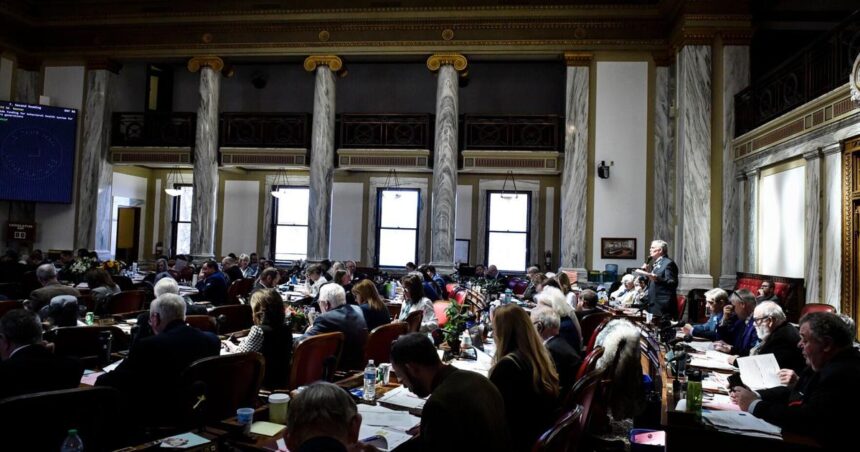In a state where the purple nature of its politics has morphed to red over the last few years, it appears that some of that ruby hue may be fading at the legislative level.
In the previous legislative session, Republicans cemented a two-thirds-plus supermajority in the Legislature, stripping the Democratic caucus of much of their lawmaking power in Montana by occupying 102 of 150 total seats between the House and Senate.
The cavern in the partisan breakdown is likely to shrink following November’s elections, however.
Following the primary elections earlier this month, a picture of what the Montana Legislature will look like is coming into focus and it looks like the Republican Party will lose its supermajority, according to multiple Republican and Democratic politicos. That will shape how key issues like health care and property taxes are legislated.
People are also reading…
“I expect there to be a significant change in the makeup of the Legislature,” said former Montana GOP chairman, past state lawmaker and Republican appointee to the districting commission Jeff Essmann, naming the “partisan breakdown” and “a shift” from rural to urban representation as the differences he expects to see. Montana went through the redistricting process following the 2020 census, drawing new state House and Senate district boundaries.
The large majority of Montana’s legislative districts are either deep red or deep blue, with only a handful of true toss-ups, meaning “about 90% of the Legislature is set,” said Kendra Miller, Democratic appointee to the districting commission.
“Ninety to 95% is probably already decided, but you know, surprises happen,” said Dan Stusek, the other Republican appointee to the districting commission.
In 2022, the last cycle when legislative seats were up for reelection, the districting commission’s numbers were able to predict 126 out of the 127 legislative races in Montana that year, Miller explained.
“Elections have become more predictable over time,” she added, in part blaming polarization.
The one race that was not predicted by the commission numbers was up in Havre, where Rep. Paul Tuss, a Democrat, upset his Republican opponent.
“He’s a good candidate who worked hard,” Essmann said.
“The downside of having so many safe … seats is that the primary candidates that win in those areas unfortunately are not campaigning in the fall for the general election,” Essmann continued. “To be a good legislator, you need to have the willingness to listen to people.”
Following the redistricting process, Republicans say Democrats “stretched” their population numbers as much as they could in certain areas, creating safer districts for themselves. Democrats, for their part, say that the maps were “out of date” and they were just adjusting to the huge population growth that happened in Montana’s urban areas since the last time the maps were drawn.





